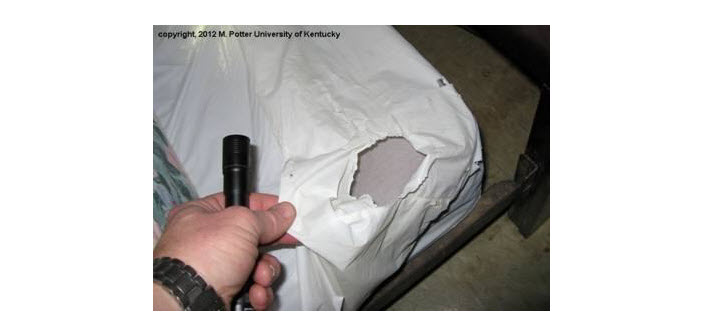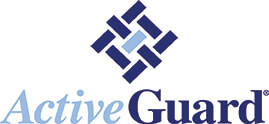NATIONAL REPORT—Product manufacturers and pest management professionals (PMP) typically advance the narrative that mattress encasements serve a role in bed bug prevention. While encasements are a tool in the PMP’s arsenal for preventing entrance and escape of bed bugs, the primary function of the product is to protect the capital asset of the bedding.
Since encasements have no active ingredient component to kill bed bugs, their usefulness is limited to protecting the mattress from stains, preventing bed bugs from creating harborage sites on the new mattress and keeping bed bugs that are encased in an existing mattress from escaping. The hotel must understand the limitations of encasements and cannot rely on manufacturers claims that encasements prevent new introductions of bed bugs or remediate existing bed bugs that are not trapped within the product.
While a hotel that is sued in a bed bug case may tout the use of encasements as a proactive measure, even a novice lawyer will be able to dismantle their usefulness in terms of bed bug prevention by appealing to the judge’s or jury’s common sense. This is not to state that encasements are not useful—they are—the point is that they serve as one very limited component in an overall integrated pest management (IPM) bed bug preventive strategy.
The other limitation not often appreciated is that encasements are only useful so long as their integrity is intact. For instance, if the encasement has a tear, the product itself is not only useless, but may likely serve as an easily overseen harborage site for bed bugs. This reality places a duty on the hotel to conduct frequent inspections to assure the product is intact and not otherwise compromised. Even a slight tear or poor zippered closure of the encasement will serve as a harborage and future epicenter of a new infestation. A good PMP needs to correctly install the product and/or educate its customer on the correct way to position the encasement.
Understanding the role of encasements in the world of bed bug control and their limitations is important. The encasement kills absolutely nothing and has no ability to prevent a few newly introduced bed bugs from transitioning to an infestation. The PMP has a duty to educate customers on the difference between mattress protection and human protection. A bed bug that hides in the headboard, footboard, carpet, behind the molding or couch will still be able to have the same access to its host with or without an encasement. The legal implication of relying on them as a standalone or primary preventive measure will surely land the hotel in legal turmoil.
So, what is a hotelier to do?
Having a solid, field-proven bed bug prevention program in place can stop infestations from happening in the first place. And it will certainly stop a bed bug incident from turning into an expensive and embarrassing situation.
Proactive bed bug prevention saves hoteliers a great deal of money, preserves brand reputation and reduces legal exposure. A 2017 research report entitled “Behind the Cost of Bed Bugs: Hospitality Industry Report” indicated that hotels spend on average $6,383 per bed bug incident. This cost includes the expense for pest control remediation, the loss of room revenue during the inspection and treatment process, guest compensation and discarding of soft goods. The report continues that over a five-year period, bed bug-related costs to hoteliers could catapult to more than $160,000.
Up until recently, the additional financial impact of bed bugs on hotel brand reputation was considered an unmeasurable metric. However, a University of Kentucky study found that just one negative report of bed bugs on an online review site can cost a 300-room hotel catering to business travelers $274,000 per month in revenue. When looking at a similarly sized hotel catering to vacation travelers, the costs approached $166,000 per month.
Studies prove prevention more than pays for itself and results in savings. You save on direct and indirect expenses connected to an incident; you save potential legal and insurance costs; and you save face, protecting your brand and reputation in the market.
About Allergy Technologies
ActiveGuard Mattress Liners kill bed bugs. Easily installed on mattresses or box springs, these liners offer two-year continual prevention and control against any adult bed bugs, nymphs or eggs. ActiveGuard has no cautionary signal words or use restrictions on its label. Only four sizes—single/twin, double/full, queen and king—fit almost every available mattress or box spring and accommodate up to extra-large in length and 17-in. in depth. Underlying is ActiveGuard’s formulation; a unique and proprietary delivery system that offers sustained bioavailability of permethrin for two years. Newest research supports that after a short exposure to ActiveGuard of only 10 minutes, bed bugs regardless of their level of resistance, begin to show significant reductions in feeding (biting) and a dramatic inability to lay eggs. This results in discontinuation of population growth thereby halting progression of an incident to an infestation. If you are seeking a pro-active preventative approach, ActiveGuard should be considered as the centerpiece of your long-term solution to keep bedding from being infested. ActiveGuard Mattress Liners are covered under U.S. Patents 5,916,580, 6,214,365, 6,440,438 and pending patents.
For more tips on preventing bed bugs and uncovering infestations early visit us online at www.hotelbedbugprevention.com.
Sections above are the courtesy of Jeffrey M. Lipman, Attorney-At-Law and Polk County Magistrate Judge.
The Lipman Law Firm practice handles consumer class action litigation, specializing in class action bed bug litigation. Jeff Lipman is a frequent speaker throughout the United States, including the National Pest Management Association and Entomological Society of America.


